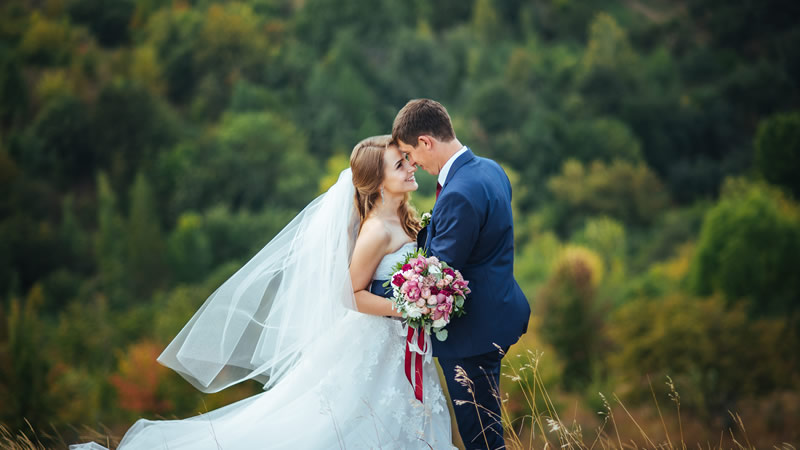A destination wedding can be one of the most gorgeous (and fun!) options for your big day. But unless you’re just inviting a small group of people, it can also quickly become very expensive when you add up all of the costs associated with hosting a far-away celebration. Though it is possible to host the getaway nuptials of your dreams — even if you’re not working with a bottomless budget. We asked event producer Lisa Vorce to share six ways brides can save money when planning a destination wedding, all without sacrificing style.
Design around local elements, not over them.
Be smart about venue selection. “Look at the design of the space, local foliage, and cultural elements and make sure they fit with how you envision your wedding to be,” says Vorce. “Don’t try to import something completely different and foreign into your chosen destination. For example, if you want a French Lavender-themed rustic reception, then picking a Balinese resort is not the right choice. Not only will it look unnatural, it’ll add a substantial amount of cost to bring in the décor, all while defeating the purpose of why you picked that location in the first place.”
Think about how easy your venue is to get to.
Commonly overlooked things like taxes and duties, transportation requirements, and travel documents can quickly add to the cost of a destination wedding. “For example, if you’re thinking of a seaside event, the Riviera Maya is a much more budget-friendly option than Turks & Caicos,” says Vorce. “Getting things to a more remote location that’s not easily accessible by airplane is challenging and costly. Also, don’t forget about passport and visa requirements for certain countries and the associated fees.”
Pick a place that doesn’t require tenting.
A tented event can be extremely expensive. “You have to take into consideration the cost of the material, getting it there, decorating it, lighting it, and putting in flooring just to name a few things,” explains Vorce. “If I’m working with a client that doesn’t have a full-blown production budget, I usually look for venues that don’t require tenting and have a covered area that could work as backup in case of inclement weather. This way, even if we have to go to Plan B, it doesn’t cost extra.”
Consider a partial buyout.
“If a complete resort buyout is not in your budget, ask the venue if you can buy out part of the property instead,” says Vorce. This way, you’re able to benefit from having privacy — at least in the areas surrounding your event — without the stress of having to pay for every room on the resort. “Venues usually consider partial buyouts on a case by case basis,” Vorce explains. “And the design of some properties — for example, if it only has one main beach — might not lend itself well to a partial buyout. Try to find a resort that might have different wings or areas and see if you’re able to reserve just that particular space.”
For the best deals, try booking during shoulder seasons.
“You have a lot more room to negotiate if it’s not peak season,” advises Vorce. “But you need to be careful that you’re not putting yourself as risk for bad weather.” Vorce recommends trying to book right on the cusp of low to high season, when most major weather threats have passed but the resort isn’t operating at full capacity yet. “During this time you could try to negotiate a discount of 20-25%.”
Fly in your most important vendors and use local talent for the rest.
“Flying in a full team of vendors is exponentially more expensive than using local talent,” says Vorce. “You might want to bring in your own photographer and videographer, but for other things, consider using local artisans. Even if you’re working with a planner, see if you can just fly in the core designers and supervisory team and then use local labor to help with the set up. Not only is this a smarter choice financially, but the true beauty of having these destination weddings is being able to work with regional artisans and support the local economy.”



